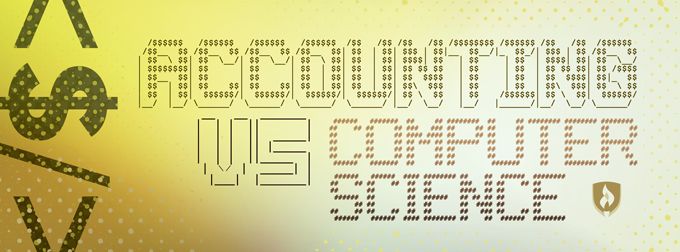
Accounting requires that you understand accumulated depreciation. Although this may seem like an intimidating topic, it's really quite simple and allows you to understand the life-cycle for assets. Depreciation occurs when you purchase a fixed asset, such as a building or machine, and you won't be able to convert it into cash for at least a year. These assets are used to produce income and include machinery, real estate, furniture and office equipment.
Accumulated depreciation is recorded to a contra-asset account
The contra-asset accounting reflects the time-based depreciation of a company's equipment, tools, and other resources. It is usually associated with the current assets account of a company’s balance sheet. Using this account can help you understand the impact of depreciation on your company's net income.
Accumulated loss is a account that records the gradual decline in value of fixed assets over a time period. These assets include company buildings, machinery and equipment as well as office furniture. These assets are not immediately disposed of; instead, they are used to reduce the value of other assets.

It reduces t account depreciation
Reduces t account depreciation is a tax accounting strategy that uses a percentage of the original cost of a fixed asset to reduce the cost of the asset. This is useful in depreciating a property whose value is rapidly falling. It's also a great way of getting a better picture of a company's financial health. It can help ensure accuracy in the income statement as well as balance sheet.
It is a non-cash expense for a business.
Business is characterized by amortization and depreciation as non-cash expenses. Both affect long-term assets. Both refer to long-term assets. Depreciation is the cost of purchasing physical assets. Amortization refers to the cost of buying intangible assets. In this example, a company would pay $10,000 in patent payments over 20 years. The cost for a patent is amortized over 20 years. This allows businesses to spread out the costs over many years without having cash in hand.
Depreciation is a type of non-cash expense that is reported on the income statement but does not have a cash payment. A company might have purchased equipment worth $200,000 two-years ago. It will then incur a depreciation expense of $20,000 per year for 10 years. The company will have an expense in the current year of $20,000 and no cash payment. This is why depreciation is considered a non-cash expense.
It lowers costs for assets that are more long-lasting.
Depreciation is a method for reducing the cost of an asset over a longer period of time. A schedule is set up to distribute the cost evenly over the asset's useful lifetime. Companies use depreciation schedules to allocate the costs of an asset.

Long-lived assets are less expensive due to depreciation. It ties the cost of use and the economic benefit over the asset’s useful life. There are many types of depreciation, such as straight-line and accelerated. Companies may incur a greater depreciation expense during the first years of an asset's useful lifetime, but defer taxes in those years.
FAQ
What is bookkeeping exactly?
Bookkeeping refers to the process of keeping financial records for individuals, companies, or organizations. It also includes the recording of all business-related income and expenses.
All financial information is tracked by bookkeepers. This includes receipts, bills, invoices and payments. They also prepare tax returns and other reports.
What is accounting's purpose?
Accounting provides an overview of financial performance by measuring, recording, analyzing, and reporting transactions between parties. Accounting allows organizations to make informed decisions about how much money they have available to invest, how much they can expect to earn from operations and whether additional capital is needed.
To provide information on financial activities, accountants record transactions.
The company can then plan its future business strategy, and budget using the data it collects.
It is essential that data be accurate and reliable.
How does an accountant work?
Accountants work with clients in order to get the best out of their money.
They collaborate closely with professionals like lawyers, bankers and auditors.
They also support internal departments such marketing and sales.
Balanced books are the responsibility of accountants.
They calculate the amount of tax that must be paid and collect it.
They prepare financial statements that show the company's financial performance.
What are the steps to get started with keeping books?
For you to begin keeping your books, you'll need a few things. These items include a notebook and pencils, calculator, staplers, envelopes, stamps and a filing drawer or desk drawer.
What is the distinction between bookkeeping or accounting?
Accounting is the study of financial transactions. Bookkeeping is the recording of those transactions.
They are both related, but different activities.
Accounting deals primarily with numbers, while bookkeeping deals primarily with people.
For the purpose of reporting on financial conditions of organizations, bookkeepers maintain financial information.
They adjust entries in accounts receivable and accounts payable to make sure that the books balance.
Accountants review financial statements to determine compliance with generally accepted Accounting Principles (GAAP).
They may suggest changes to GAAP if they do not agree.
Bookkeepers keep records of financial transactions so that the data can be analyzed by accountants.
Statistics
- Given that over 40% of people in this career field have earned a bachelor's degree, we're listing a bachelor's degree in accounting as step one so you can be competitive in the job market. (yourfreecareertest.com)
- Employment of accountants and auditors is projected to grow four percent through 2029, according to the BLS—a rate of growth that is about average for all occupations nationwide.1 (rasmussen.edu)
- "Durham Technical Community College reported that the most difficult part of their job was not maintaining financial records, which accounted for 50 percent of their time. (kpmgspark.com)
- In fact, a TD Bank survey polled over 500 U.S. small business owners discovered that bookkeeping is their most hated, with the next most hated task falling a whopping 24% behind. (kpmgspark.com)
- a little over 40% of accountants have earned a bachelor's degree. (yourfreecareertest.com)
External Links
How To
Accounting for Small Business
Accounting is a critical part of running a small business. Accounting includes the preparation of financial reports and income statements, as well tracking expenses and income. Quickbooks Online and other software programs are required. There are many options for accounting small businesses. You need to choose the most appropriate method for your business. Here are some top options that you can consider.
-
The paper accounting method is recommended. Paper accounting is a good option if you prefer simplicity. This method is very simple. You simply need to record transactions every day. However, if you want to make sure that your records are complete and accurate, then you might want to invest in an accounting program like QuickBooks Online.
-
Online accounting. Online accounting is a way to have easy access to your accounts no matter where you are. Wave Systems, Freshbooks, Xero, and Freshbooks are just a few of the popular options. These software can be used to manage your finances, pay bills and send invoices. You can also generate reports. They are easy to use, have great features, and many benefits. These programs will help you save both time and money in accounting.
-
Use cloud accounting. Another option is cloud accounting. Cloud accounting allows you to securely store your data on remote servers. Cloud accounting is a better option than traditional accounting systems. It doesn't require you to purchase expensive hardware or software. It offers greater security as all of your data is stored remotely. It also saves you time and effort in backing up your data. It also makes it easier to share your files.
-
Use bookkeeping software. Bookkeeping software is similar with cloud accounting. However you must purchase a computer in order to install the software. Once you have installed the software, the software will allow you to connect to the Internet so you can access your accounts whenever it suits you. You can also view your balances and accounts right from your computer.
-
Use spreadsheets. Spreadsheets are used to enter your financial transactions manually. To illustrate, you could create a spreadsheet in which you can record your sales figures daily. A spreadsheet's advantage is that you can make changes to them at any time without having to change the whole document.
-
Use a cash book. A cashbook allows you to record every transaction. There are many different shapes and sizes of cashbooks depending on how much room you have. You can choose to use separate notebooks for each months or one notebook that spans multiple years.
-
Use a check register. You can use a check register as a tool to help you organize receipts or payments. Once you have scanned the items, you can transfer them into your check register. Notes can be added to the items once they are scanned.
-
Use a journal. Journals are a logbook that helps you keep track of your expenses. This is best for those who have recurring expenses like rent, insurance, and utilities.
-
Use a diary. You can simply use a diary to keep track of your life. It can be used to track your spending habits and plan your finances.